Why you can trust Tom's Hardware
The MAG321CURV is perfectly enjoyable without calibration, but we recommend adjusting the RGB sliders and setting the picture mode options to our recommended settings on page 1 for optimal performance.
Grayscale and Gamma Tracking
We describe our grayscale and gamma tests in detail here.
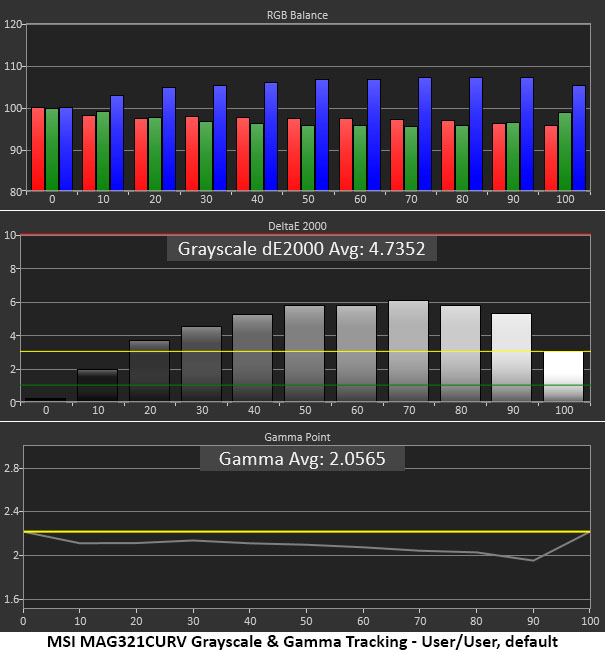
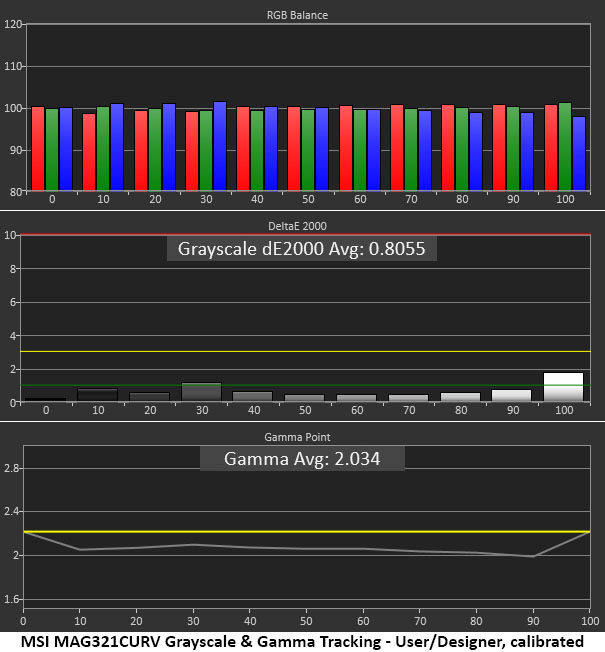
With Game Mode and Pro Mode both set to User and Color Temperature set to Normal, the MAG321CURV’s grayscale tracking ran slightly cool. You can see a blue tint at 20% brightness and higher, which made the image look a little flat. Gamma was also too light. The error isn’t huge, and tracking is tight, but a VA panel looks better when the value is between 2.2 and 2.4. Our preference is 2.2, but if there is an error, we’d rather it be above the line rather than below, as is the case with the MAG321CURV.
The MAG321CURV’s RGB sliders are very precise and well-balanced, so our adjustments produced very visible gains. Nearly all steps are below 1 Delta E (dE), with an average of just 0.0855dE. That’s pro-level performance. Gamma is unchanged though, so a couple of presets would be welcome here.
Comparisons
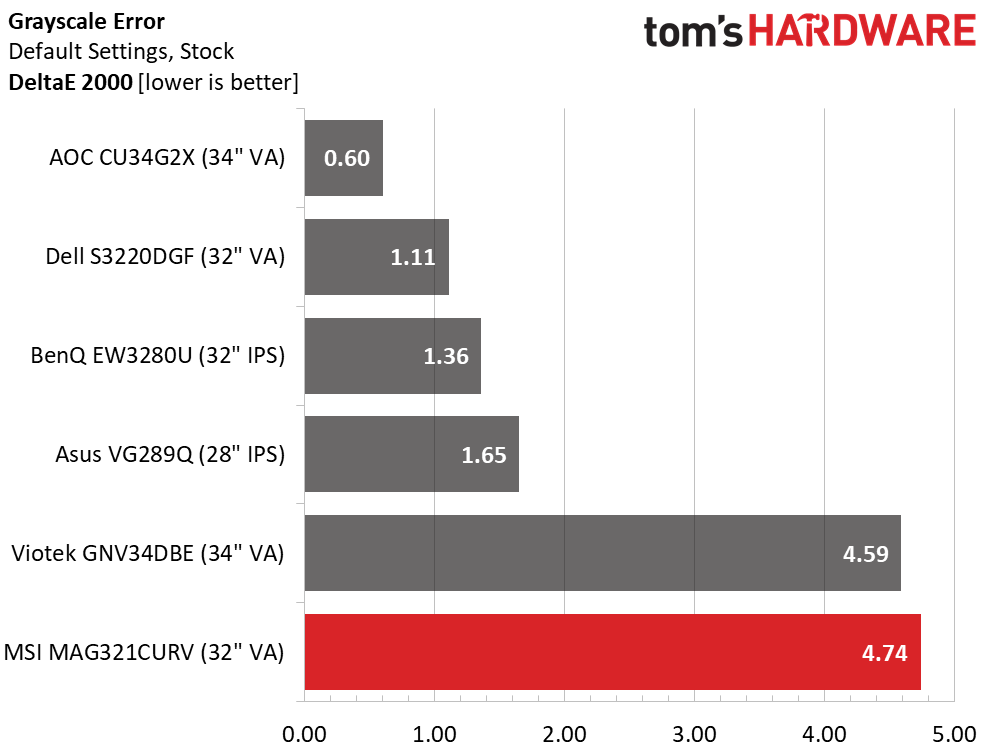
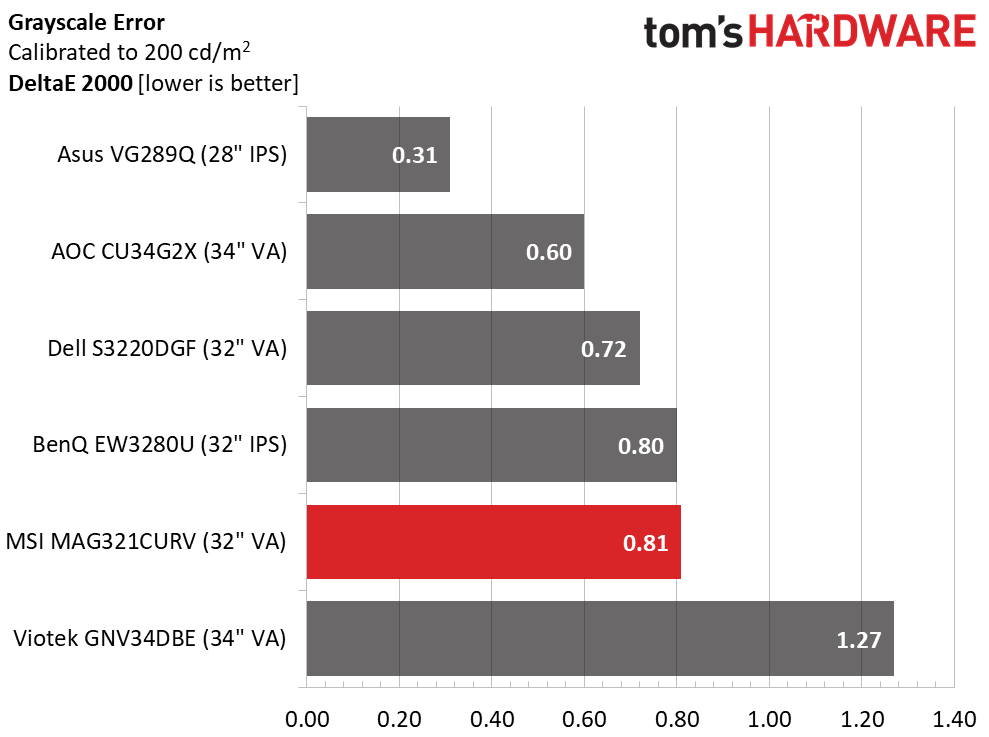


A 4.74dE score before calibration isn’t terrible, but as you can see, this places the MAG321CURV at the bottom of our comparison pack, and many gaming monitors can do better. While the top four screens in our first chart are particularly good and don’t require calibration, the MSI does.
After adjustment (second chart above), you won’t see an error on any of the monitors. Though the MSI finished fifth place here, its average error is below 1dE, which is professional display territory.
Gamma is a mixed bag when comparing the numbers. The range of values is nice and tight, meaning the light average value isn’t a big problem. But we are sticklers for accuracy and would love to see MSI either add presets or up the default gamma tracking to at least 2.2.
Get Tom's Hardware's best news and in-depth reviews, straight to your inbox.
Color Gamut Accuracy
Though many gaming monitors are moving toward the wider DCI-P3 color space, the MAG321CURV sticks with sRGB and is very accurate in doing so. SDR games look very good on the MAG321CURV.
For details on our color gamut testing and volume calculations, click here.


Out of the box, the MAG321CURV posted an average error of 3.0673dE. That’s mainly due to slight hue issues in the secondaries and a little undersaturation in the red primary. We were able to correct the hue errors with a grayscale calibration.
Our adjustments (see our recommended settings on page 1) nearly eliminated the error. Red was still slightly under at the 60% and 80% brightness points, but the secondaries are now spot-on. This is excellent performance.
Comparisons

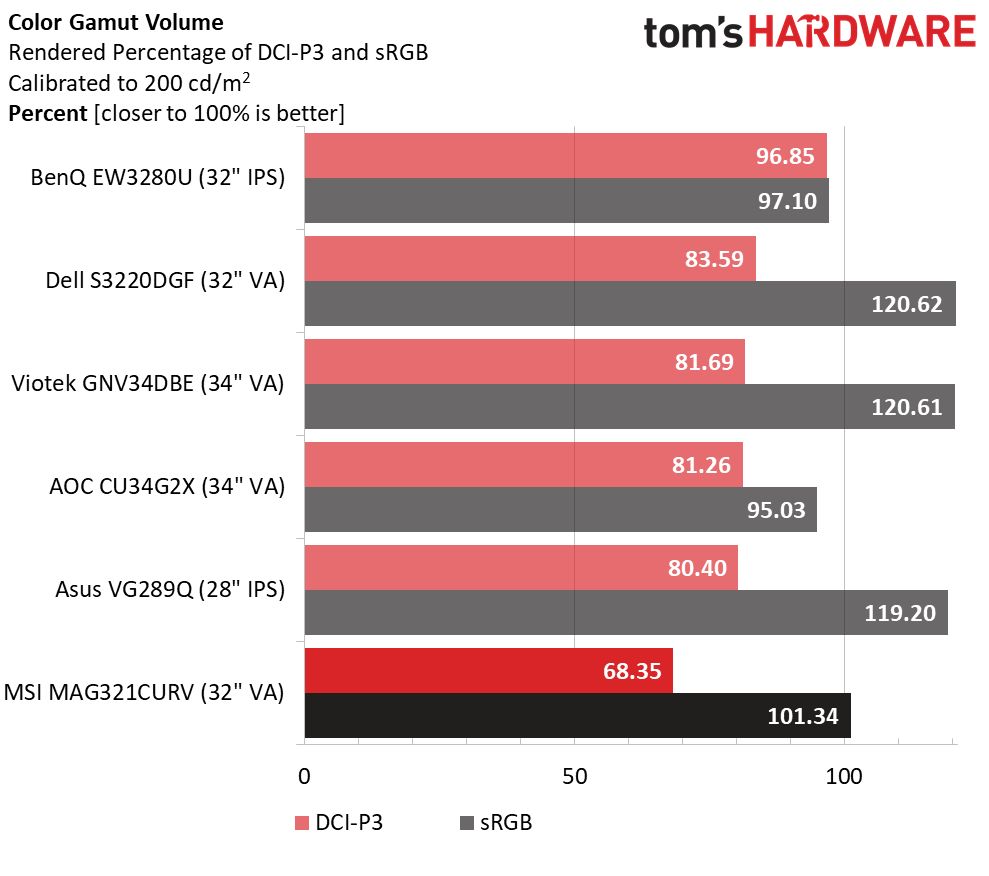
Our calibration took the color gamut error from 3.07 to 1.68dE, an impactful gain. While we’d like to see a tiny bit more red, SDR content looked great. The light gamma contributes to the overall saturation level and it looked fine when viewing real-world material, but there is a little upward potential here.
With 101.3% coverage, there’s obviously no issues with covering all of the sRGB color space. But since this is an HDR monitor and most HDR content is rendered in the wider DCI-P3 color space, we checked the MAG321CURV’s DCI-P3 gamut volume. With 68% coverage, playing HDR games or watching HDR movies will be underwhelming, lacking that extra color the DCI-P3 color space affords. HDR support and extended color should go hand in hand.
MORE: Best Gaming Monitors
MORE: How We Test Monitors
MORE: All Monitor Content
Current page: Grayscale, Gamma and Color
Prev Page Brightness and Contrast Next Page HDR Performance
Christian Eberle is a Contributing Editor for Tom's Hardware US. He's a veteran reviewer of A/V equipment, specializing in monitors. Christian began his obsession with tech when he built his first PC in 1991, a 286 running DOS 3.0 at a blazing 12MHz. In 2006, he undertook training from the Imaging Science Foundation in video calibration and testing and thus started a passion for precise imaging that persists to this day. He is also a professional musician with a degree from the New England Conservatory as a classical bassoonist which he used to good effect as a performer with the West Point Army Band from 1987 to 2013. He enjoys watching movies and listening to high-end audio in his custom-built home theater and can be seen riding trails near his home on a race-ready ICE VTX recumbent trike. Christian enjoys the endless summer in Florida where he lives with his wife and Chihuahua and plays with orchestras around the state.